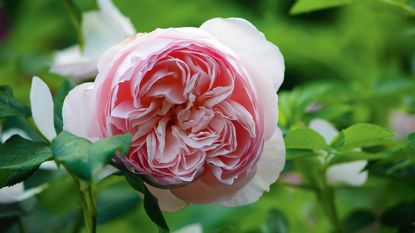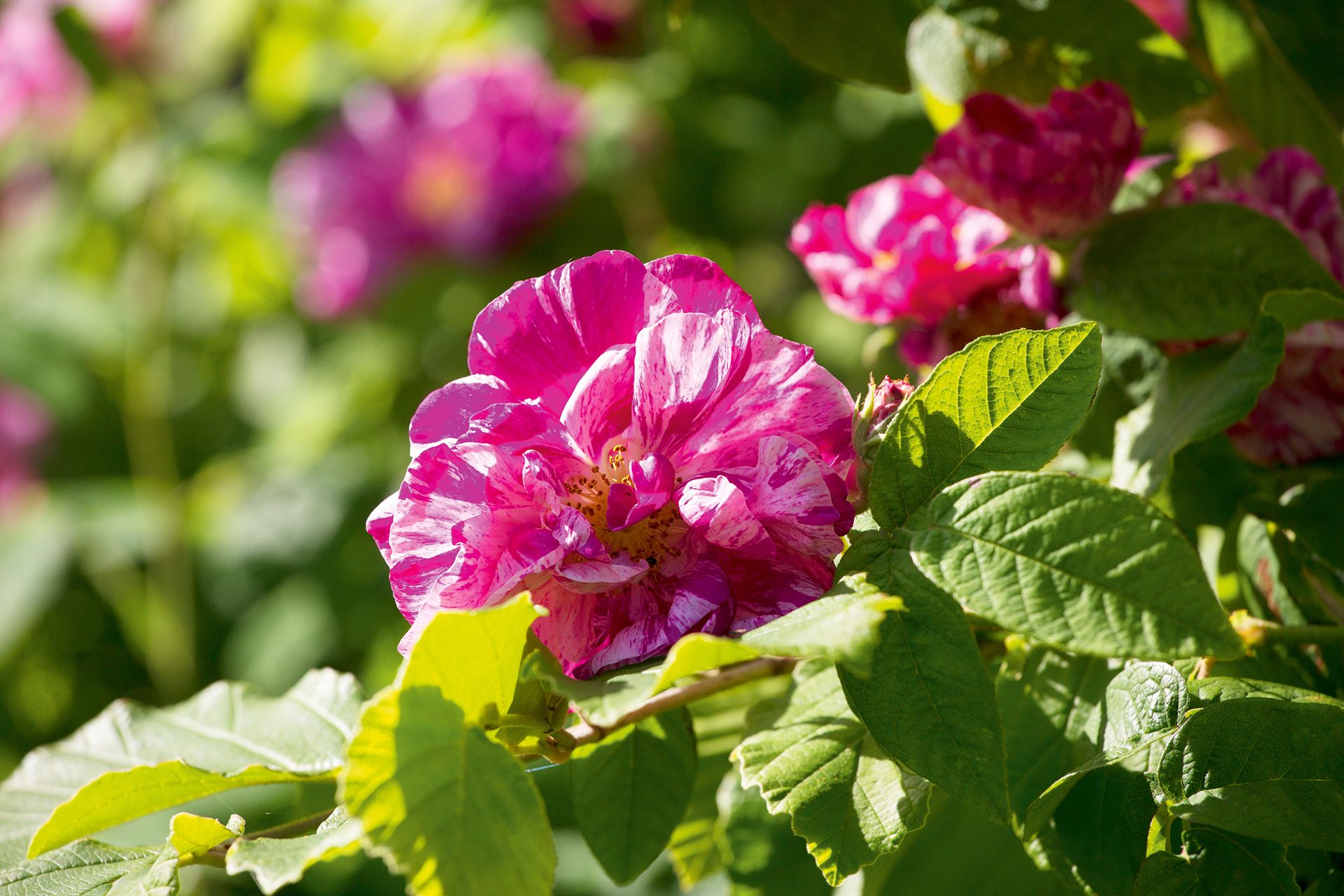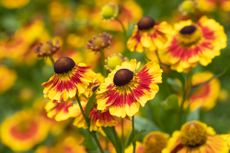How to take rose cuttings – tips for propagating roses
Learn how rose cuttings can help you to propagate new plants from your favorite blooms


Taking rose cuttings is an easy way to create new plants from your favorite roses, and is completely free. In our opinion, you can never have too many roses; the stalwart of a country garden, they bring fragrance and color from June all the way through to December and, with so many types available, there's a variety for nearly every situation.
Roses grown from cuttings have the advantage of being free from suckers, however they can grow with less vigor. Read on for step-by-step instructions on how to grow roses from cuttings.
See: How to plant roses – an essential guide
When to take rose cuttings

Rose cuttings can be taken at any time of the year, but it will depend on what type of cutting you take. There are two ways to take rose cuttings – as hardwood cuttings or as softwood cuttings. Hardwood cuttings are taken from mature growth, albeit from that current year, during autumn and winter when the rose is dormant. Softwood, stem-tip cuttings are taken in late spring and early summer from new-season growth.
Which method is better is very much up for debate, as various sources recommended different methods. Softwood cuttings are far quicker to root, taking only a couple of months, whereas hardwood cuttings are far slower to root but are generally viewed as more reliable.
See: Rose garden ideas – for a colorful and sweetly scented outdoor space
How to take hardwood rose cuttings

1. In early autumn, after flowering, select healthy shoots of about pencil thickness. Remove the flower and cut off a length around 30cm.
2. To prepare the cutting remove the leaves and cut the shoot down to around 23cm. At the top cut at an angle, just above an outward facing bud, and at the bottom make a straight just below a bud. The bud is the point at which a leaf attached to the stem. Place these in a polythene bad to ensure they don’t dry out.
3. Prepare a bed for your cuttings. Choose an open site, but one that is shaded from the midday sun. To plant the cuttings, make a narrow, slit-like trench and dribble in sand to improve the drainage. Alternatively create individual holes 15cm apart using a dibber or piece of bamboo cane and sprinkle sand in each.
4. Place the cuttings vertically into the trench so that a third of the shoot is above the soil. Cuttings will need to be placed at least 15cm apart. Infill with soil, firm and water.
5. In a year’s time, the cuttings should have developed a root system and can then be carefully lifted using a fork and planted in their final position.
How to take softwood rose cuttings

1. These should be cut in late spring and summer from new growth. They should be cut in the same way as a hardwood cutting – above a bud at the top and below a bud at the bottom, however they can be shorter, around 10cm.
2. Remove all leaves apart from the top leaflets, stripped down to two leaves.
3. Before planting the cuttings, you can at this stage dip the bottoms of the cuttings in rooting hormone, available as a powder or liquid, to stimulate growth.
4. Plant the cuttings into a pot filled with an equal mixture of compost and sand. Create holes with a dibber will help protect the cutting.
5. Water well and cover with the pots a plastic bag secured with a rubber band.
6. By autumn a good root system should have developed, the plants can then be potted on into more nourishing compost and, by the following autumn, they should be ready to plant into their final position.
How to root a rose cutting
To root a rose cutting you need to take either softwood cuttings in late spring or summer or hardwood cuttings in early fall to late winter.
If taking hardwood cuttings, plant these into a narrow trench in a prepared bed. Sprinkle in sand before planting to improve drainage and then infill and water.
Softwood cuttings can be done in the same way, but can be smaller and planted into pots filled with an equal mixture of compost and sand and then covered with a plastic bag.
Softwood cuttings should root within a few months, while hardwood cuttings will take longer, however after a year both should have developed a good root system and the plants can then be planted into their final position.
In the BBC TV show Gardener’s World, gardener Monty Don revealed a key tip to growing roses from cuttings. ‘One tip to improve rooting is to damage the leaf nodes – you can either nick them with secateurs; you can bruise them… and that will provoke roots from that point, so if they’re buried I’ll get roots all the way up and hopefully a healthier plant.’
Can you root rose cuttings in water?
Rose cuttings can be rooted in water, too. To do this, in late spring select a healthy stem from the current year's growth and cut a 15cm section just below a bud.
Remove all the leaves leaving just the top two. Submerge the cutting into a clean jar half-filled with lukewarm water and place it in a sunny spot such as a windowsill. The water should be replaced once to twice a week.
See: How to deadhead roses – for more flowers in a matter of weeks
Roots should start to form within a month or two. Once there is a good network of roots the cutting can be carefully potted until into pots filled with compost and some sand. The pot should be kept moist but should not be over watered.
The rose should be ready for planting out into the garden in the following spring.
Pippa is Content Editor on Homes & Gardens online contributing to Period Living and Country Homes & Interiors print issues. A graduate of Art History and formerly Style Editor at Period Living, she is passionate about architecture, creating decorating content, interior styling and writing about craft and historic homes. She enjoys searching out beautiful images and the latest trends to share with the Homes & Gardens audience. A keen gardener, when she’s not writing you’ll find her growing flowers on her village allotment for styling projects.
-
-
 I'm a sleep editor - here are my picks from Nate Berkus' bedding collection
I'm a sleep editor - here are my picks from Nate Berkus' bedding collectionNate Berkus' bedding collection consists of bed sheets, comforters, sham sets, and more, in modern, classic designs. As your a sleep editor, these are my favorite buys
By Louise Oliphant • Published
-
 Experts: Country music star Jana Kramer's house sale clinched due to a curb appeal 'magic formula'
Experts: Country music star Jana Kramer's house sale clinched due to a curb appeal 'magic formula'The same week the country music star announced her pregnancy, Jana Kramer reveals she is moving home too – and real estate experts say her home's exterior is the secret to its sale
By Megan Slack • Published
-
 Water garden ideas – 9 ways to introduce soothing water to your outdoor space
Water garden ideas – 9 ways to introduce soothing water to your outdoor spaceFrom cascading fountains to wildlife ponds, there are plenty of ways to create a tranquil water garden
By Leigh Clapp • Published
-
 How to grow poppies
How to grow poppiesFind out how to grow poppies to enjoy the beauty of these brightly colored tissue paper-like blooms
By Leigh Clapp • Published
-
 How to grow delphiniums from seed
How to grow delphiniums from seedFind out how to grow delphiniums from seed and enjoy these colorful cottage garden favorites filling beds and borders
By Leigh Clapp • Published
-
 How to grow ferns – when and how to plant and care for them
How to grow ferns – when and how to plant and care for themLearn how to grow ferns to enjoy the texture and form of these versatile plants in many areas of your garden
By Leigh Clapp • Published
-
 How to grow sweet peas from seed – in borders and pots
How to grow sweet peas from seed – in borders and potsFind out how to grow sweet peas and where to enjoy their wonderful color, ruffled blooms and sweet fragrance in your garden
By Pippa Blenkinsop • Published
-
 How to make fat balls for birds – easy steps feed our feathered friends
How to make fat balls for birds – easy steps feed our feathered friendsLearn how to make fat balls for birds to ensure their wellbeing throughout the winter
By Holly Reaney • Published
-
 Planning a kitchen garden – from layouts to picking the best crops
Planning a kitchen garden – from layouts to picking the best cropsPlanning a kitchen garden is easy with this expert advice – whether yours is in beds, borders or a dedicated patch – you're guaranteed success
By Leigh Clapp • Published
-
 Fall flowers for pots – 10 beautiful ideas to add color and interest
Fall flowers for pots – 10 beautiful ideas to add color and interestExtend your growing season with the best fall flowers for pots – from pretty annuals to hardy perennials
By Melanie Griffiths • Published









